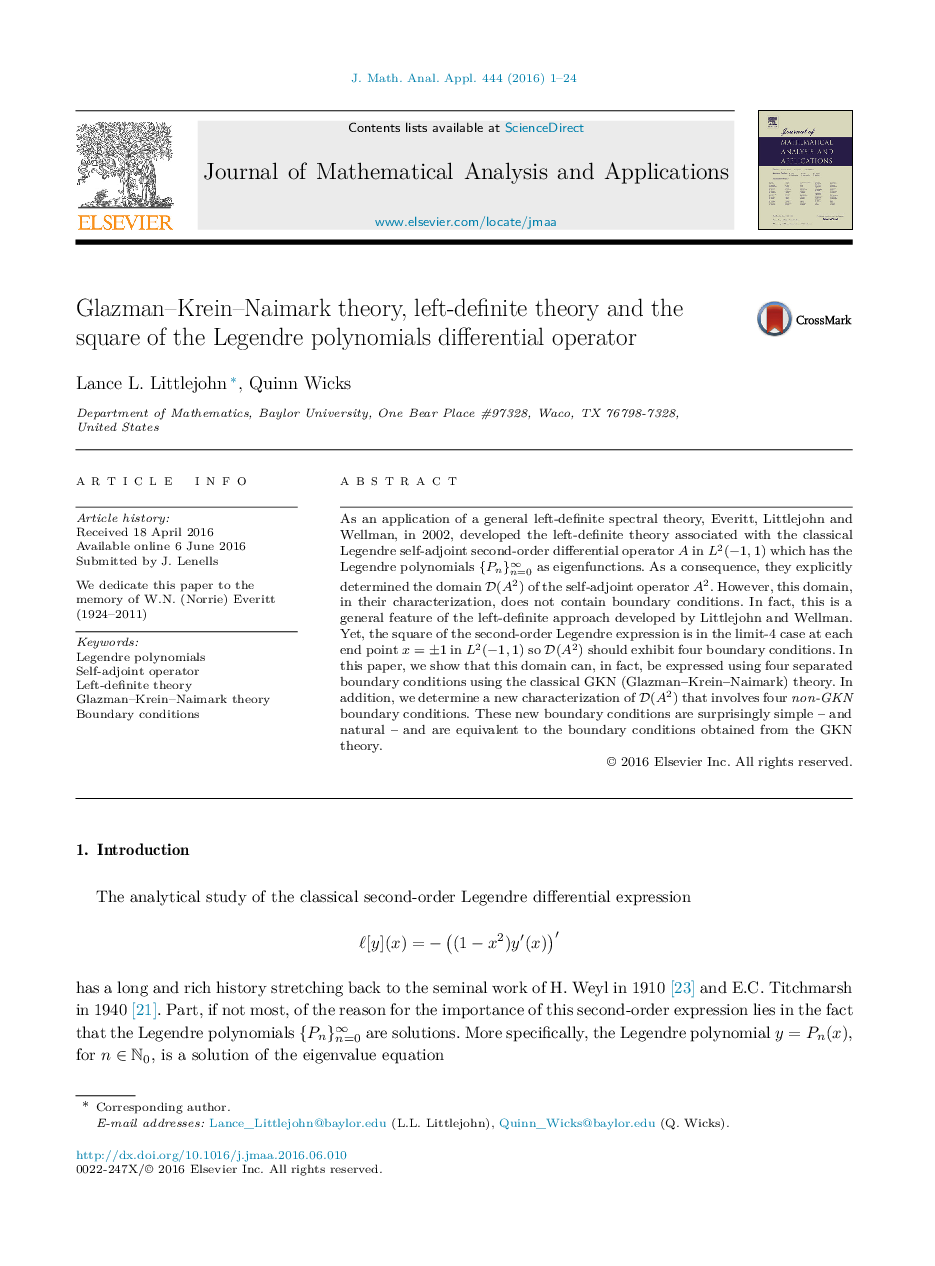| Article ID | Journal | Published Year | Pages | File Type |
|---|---|---|---|---|
| 4613866 | Journal of Mathematical Analysis and Applications | 2016 | 24 Pages |
As an application of a general left-definite spectral theory, Everitt, Littlejohn and Wellman, in 2002, developed the left-definite theory associated with the classical Legendre self-adjoint second-order differential operator A in L2(−1,1)L2(−1,1) which has the Legendre polynomials {Pn}n=0∞ as eigenfunctions. As a consequence, they explicitly determined the domain D(A2)D(A2) of the self-adjoint operator A2A2. However, this domain, in their characterization, does not contain boundary conditions. In fact, this is a general feature of the left-definite approach developed by Littlejohn and Wellman. Yet, the square of the second-order Legendre expression is in the limit-4 case at each end point x=±1x=±1 in L2(−1,1)L2(−1,1) so D(A2)D(A2) should exhibit four boundary conditions. In this paper, we show that this domain can, in fact, be expressed using four separated boundary conditions using the classical GKN (Glazman–Krein–Naimark) theory. In addition, we determine a new characterization of D(A2)D(A2) that involves four non-GKN boundary conditions. These new boundary conditions are surprisingly simple – and natural – and are equivalent to the boundary conditions obtained from the GKN theory.
